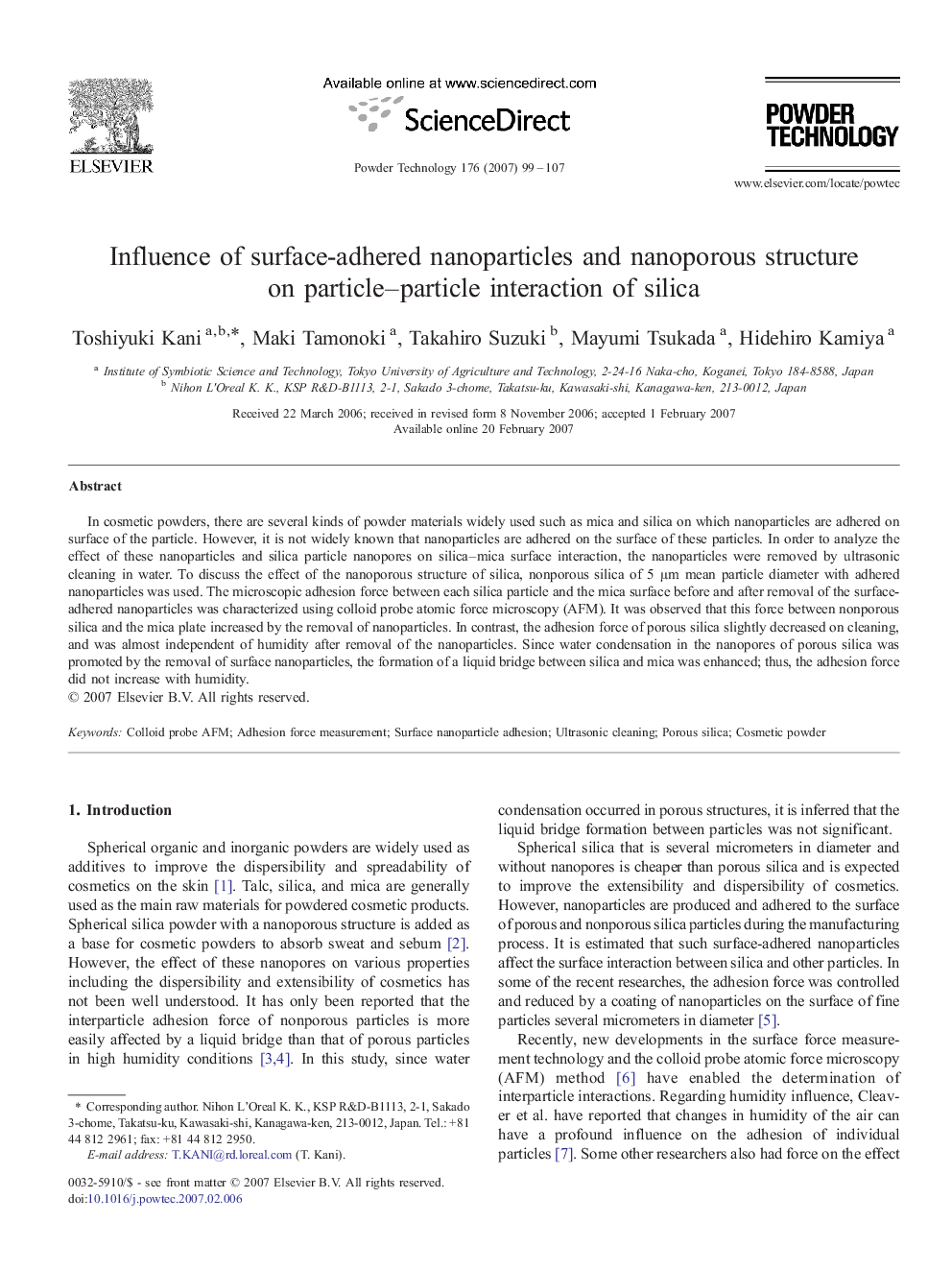| Article ID | Journal | Published Year | Pages | File Type |
|---|---|---|---|---|
| 238973 | Powder Technology | 2007 | 9 Pages |
In cosmetic powders, there are several kinds of powder materials widely used such as mica and silica on which nanoparticles are adhered on surface of the particle. However, it is not widely known that nanoparticles are adhered on the surface of these particles. In order to analyze the effect of these nanoparticles and silica particle nanopores on silica–mica surface interaction, the nanoparticles were removed by ultrasonic cleaning in water. To discuss the effect of the nanoporous structure of silica, nonporous silica of 5 μm mean particle diameter with adhered nanoparticles was used. The microscopic adhesion force between each silica particle and the mica surface before and after removal of the surface-adhered nanoparticles was characterized using colloid probe atomic force microscopy (AFM). It was observed that this force between nonporous silica and the mica plate increased by the removal of nanoparticles. In contrast, the adhesion force of porous silica slightly decreased on cleaning, and was almost independent of humidity after removal of the nanoparticles. Since water condensation in the nanopores of porous silica was promoted by the removal of surface nanoparticles, the formation of a liquid bridge between silica and mica was enhanced; thus, the adhesion force did not increase with humidity.
Graphical abstractIt was observed that microscopic adhesion force between nonporous fused silica and the mica plate increased by the removal of the surface-adhered nanoparticles. In contrast, the microscopic adhesion force of porous silica slightly decreased on cleaning, and was almost independent of humidity after removal of the surface-adhered nanoparticles.Figure optionsDownload full-size imageDownload as PowerPoint slide
